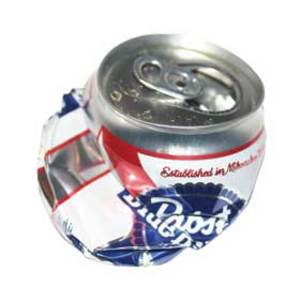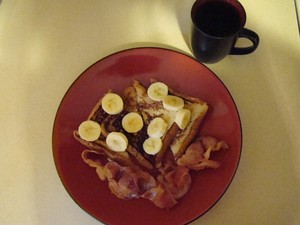There are a lot of light beers out there. They exist because we as Americans like our alcohol, but we also are very concerned about our weight. So, if that is the case, then a light beer should deliver fewer calories but still have a comparable alcohol content to its regular beer counterparts. Some people also drink light beer so that they don’t feel as full or as bloated as they would be if they downed lagers or stouts. As with most things, not all light beers are alike. So let’s take a look at some popular light beers and compare their total calories, carb content, and alcohol content. This article will not cover taste characteristics because those are purely subjective and when it comes to light beer, I can safely assure you that they can be judged according to how watery they taste.
Bud Light has an alcohol content of 4.2% compared to 5.0% of regular Budweiser. It’s comparatively low on the calories, with only 95 calories per 12 ounce can compared with 143 of Budweiser. Finally, Bud Light has 6.6 grams of carbohydrates compared with Budweiser’s 10.6. Therefore, if you compare the two beers, Bud Light has a 16% lower alcohol content, 34% fewer calories, and 38% fewer carbs.
Coors Light has an alcohol content of 4.2% compared with 5.0% of regular Coors. It has slightly more calories per 12 ounce can than Bud Light with 102 calories. Regular Coors has 148 calories. A comparison of carb content yields Coors Light at 5 grams of carbohydrates and regular Coors at 11.3 grams. Thus, Coors Light has a lower carbohydrate content than Bud Light if you’re watching your weight, but it has more total calories than Bud Light. The two have the same alcohol content, so it boils down to a matter of carbs and taste.
Busch Light
Like the other light beers in our comparison so far, Busch Light has an alcohol content of 4.2%. It has more total calories than either Bud Light or Coors Light at 110 calories per 12 ounce can. It has slightly more carbs than Bud Light and substantially more carbohydrates than Coors Light, at 6.7 grams. Therefore, if you’re watching your weight, then Busch Light probably isn’t the best choice unless you love its taste.
Keystone Light
Keystone has a reputation of being one of the cheapest light beers you can buy. However, how it measures up in our comparison of alcohol content, calories, and carbs is another matter. Like all the other light beers so far in our comparison, Keystone Light has 4.2% alcohol. With 100 calories, it is somewhere in the middle between Bud Light on the Low end and Busch Light on the high end. In terms of carbs, Keystone rates lower than Busch Light and Bud Light and the same as Coors Light, with 5 grams of carbohydrates per 12 ounce can. Thus, Keystone is a good middle-ground contender in our comparison of light beers.
Miller Light
Miller Light ranks fairly low on our comparison. Like all the other light beers it has a 4.2% alcohol content. Its 96 calories per 12 ounce can make it the second lowest-calorie light beer so far surveyed, second to Bud Light. However, carb content is Miller Light’s strong point in the comparison. It has only 3.2 grams of carbohydrates per 12 ounce can which makes it the lowest carb-containing light beer by far.
So, what conclusions can we draw from this comparison of five of the most popular light beers? Well, if you’re looking for alcohol content, they all have the same rating. If you’re watching your caloric intake, then Miller Light and Bud Light are the best choices, although all of the beers are pretty low on the carbs. Busch Light was the only light beer in the comparison that had a significantly higher calorie content. In terms of carbs, Miller Light is by far the best choice if you’re keeping an eye on your carb intake, followed by Coors Light and Keystone Light. Stay away from Busch Light or Bud Light if you’re on the Atkins diet. I hope this comparison was a help. Happy drinking!



